4. MARSHALLING SIGNALS
4.1. From a signalman/marshaller to an aircraft
4.1.1. The signals for use by the signalman/marshaller, with hands illuminated as necessary to facilitate observation by the pilot, and facing the aircraft in a position shall be:
(a) for fixed-wing aircraft, on left side of aircraft, where best seen by the pilot; and
(b) for helicopters, where the signalman/marshaller can best be seen by the pilot.
4.1.2. Prior to using the following signals, the signalman/marshaller shall ascertain that the area within which an aircraft is to be guided is clear of objects which the aircraft, in complying with SERA.3301(a), might otherwise strike.
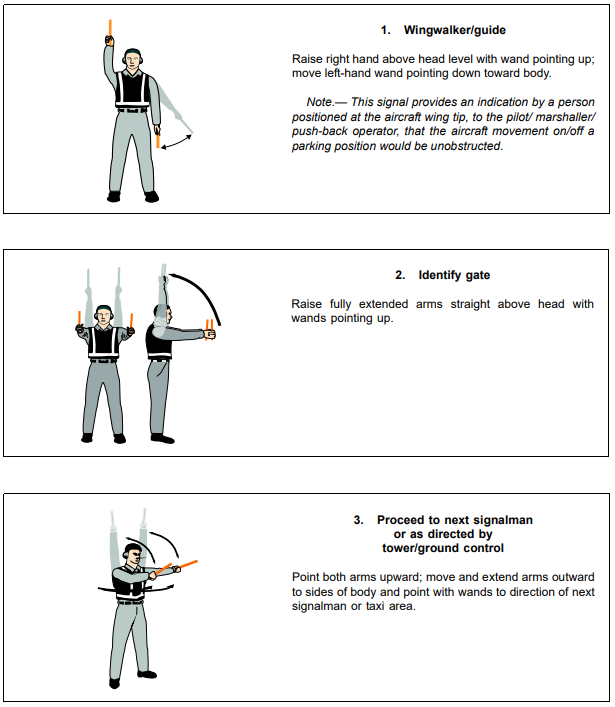
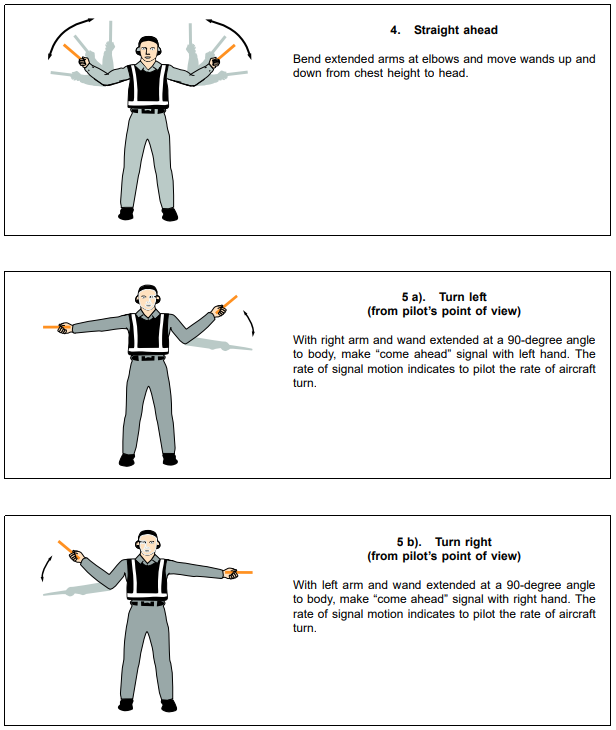
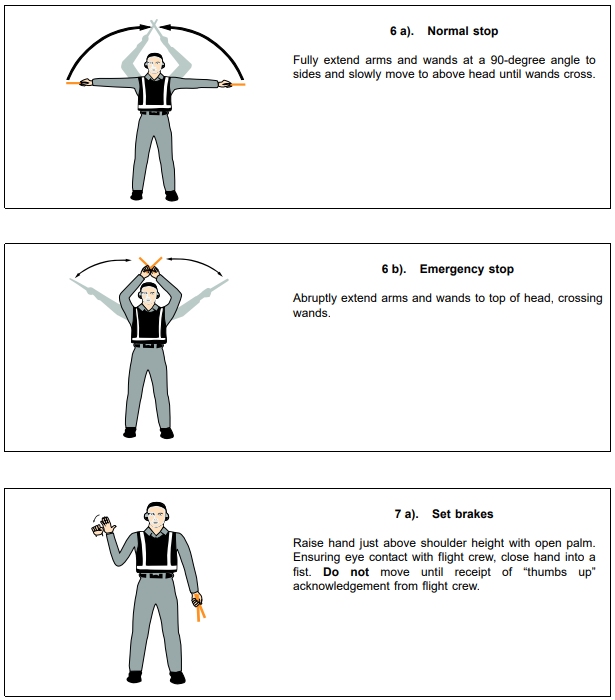
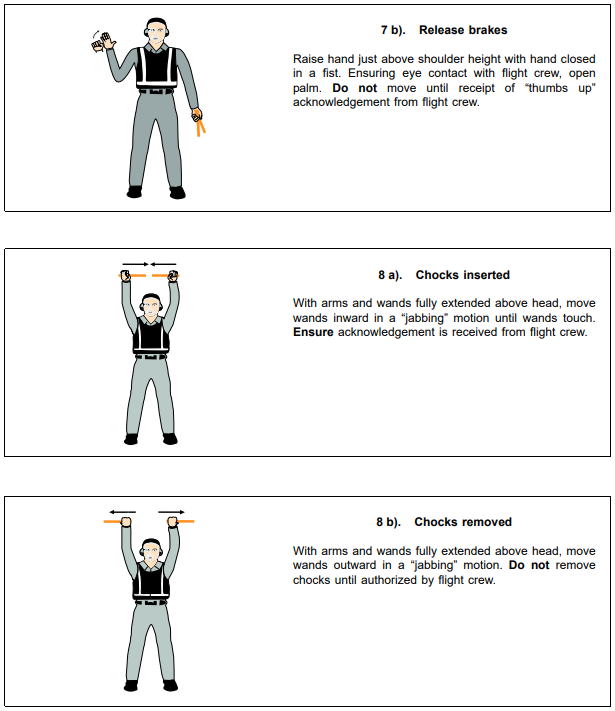
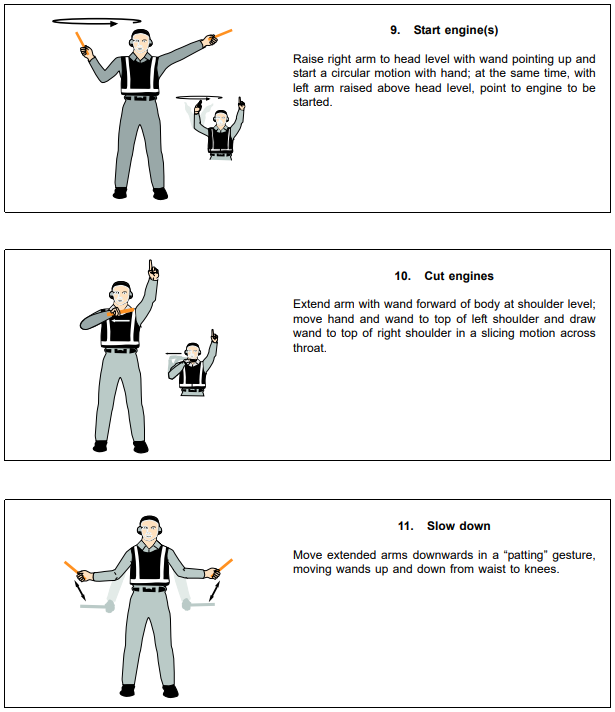
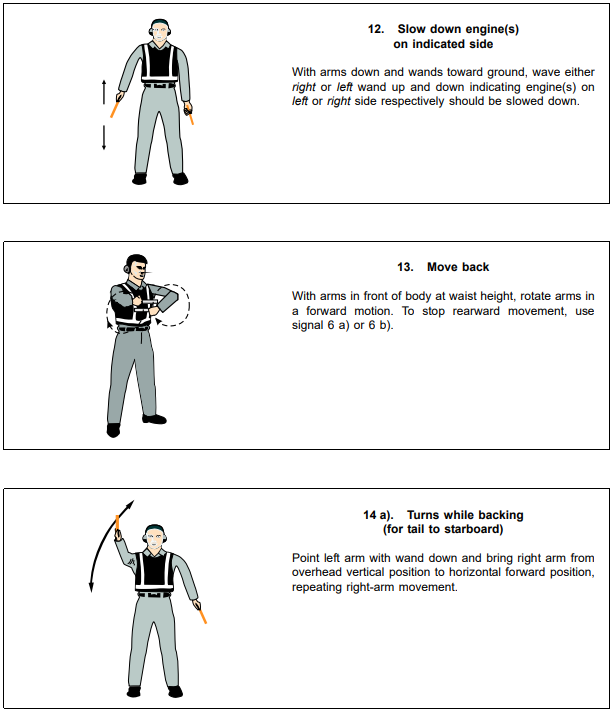
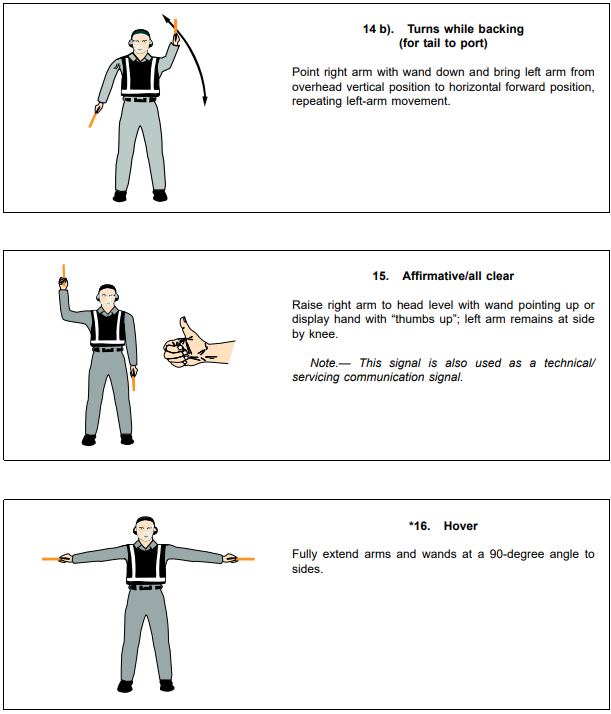
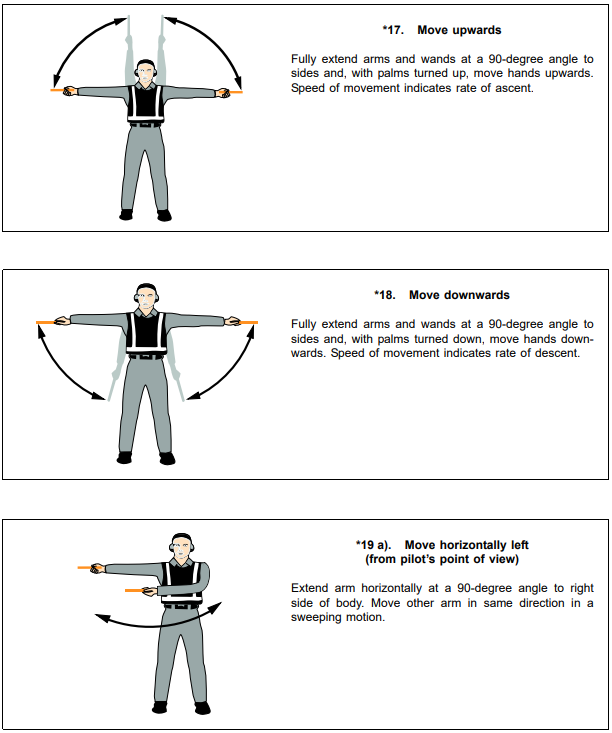
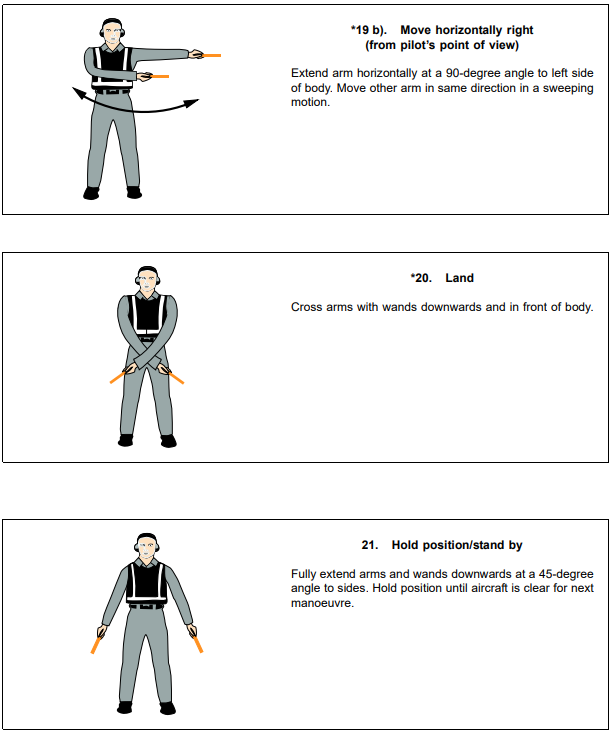
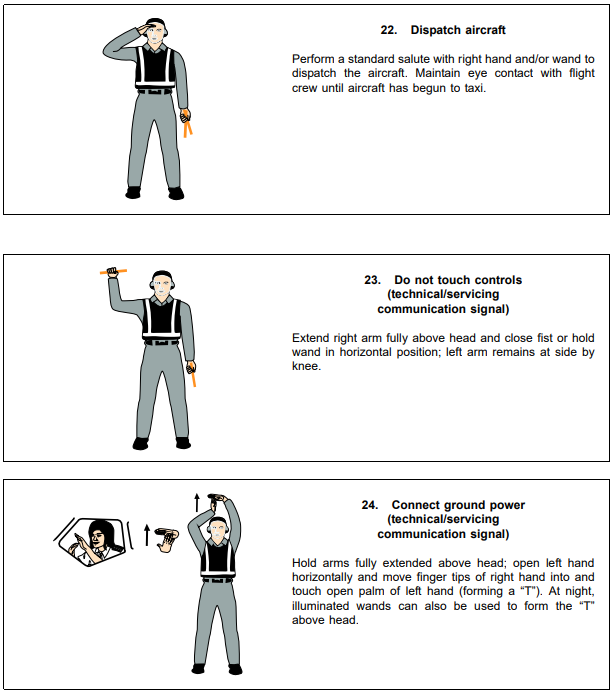
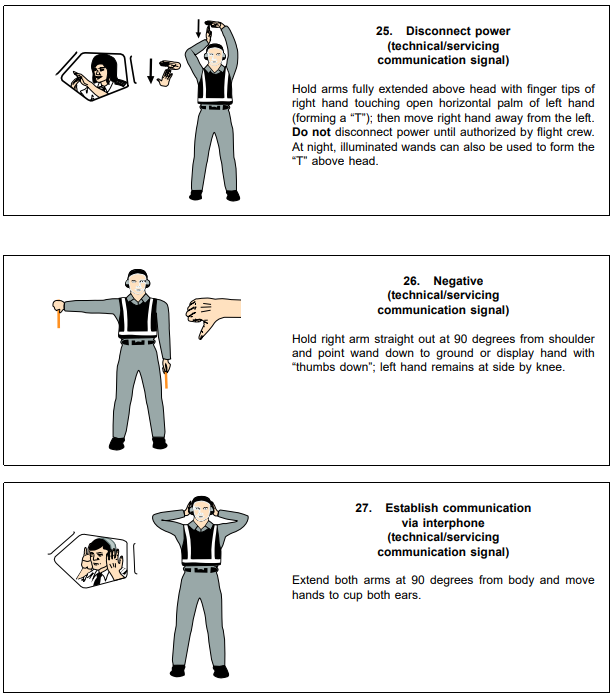
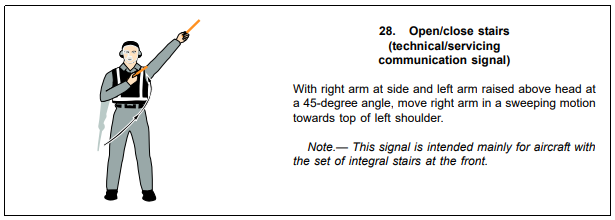
4.2. From the pilot of an aircraft to a signalman/marshaller
4.2.1. These signals shall be used by a pilot in the cockpit with hands plainly visible to the signalman/marshaller, and illuminated as necessary to facilitate observation by the signalman/marshaller.
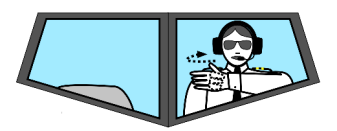
|
(a) Brakes engaged: raise arm and hand, with fingers extended, horizontally in front of face, then clench fist. |
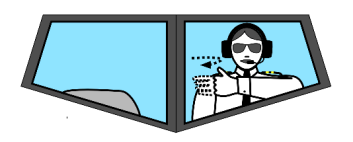
|
(b) Brakes released: raise arm, with fist clenched, horizontally in front of face, then extend fingers. |
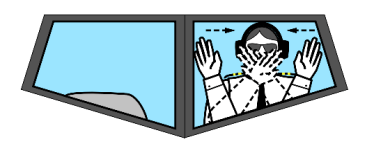
|
(c) Insert chocks: arms extended, palms outwards, move hands inwards to cross in front of face. |
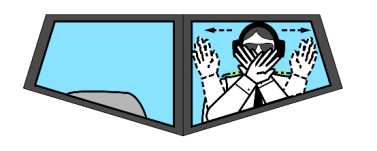
|
(d) Remove chocks: hands crossed in front of face, palms outwards, move arms outwards. |
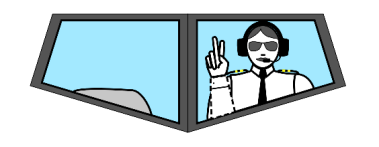
|
(e) Ready to start engine(s): Raise the appropriate number of fingers on one hand indicating the number of the engine to be started. |
4.3. Technical/servicing communication signals
4.3.1. Manual signals shall only be used when verbal communication is not possible with respect to technical/servicing communication signals.
4.3.2. Signalmen/marshallers shall ensure that an acknowledgement is received from the flight crew with respect to technical/servicing communication signals.